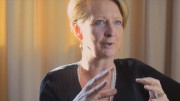 The next 12 months are set to usher in a new pattern for global advertising investment, with marketers re-evaluating their approach due to concerns over the digital marketing slowdown, rising media fragmentation and increased pressure to prove they are acting on diversity and inclusion, as well as climate change.
The next 12 months are set to usher in a new pattern for global advertising investment, with marketers re-evaluating their approach due to concerns over the digital marketing slowdown, rising media fragmentation and increased pressure to prove they are acting on diversity and inclusion, as well as climate change.
So says the first instalment of WARC’s “Marketer’s Toolkit 2023: The Future of Media” report, which is set against a backdrop of economic crises, geopolitical complexity, spiralling inflation, supply chain disruption, and structural technology shifts.
Based on exclusive data from WARC Media, findings from a global survey of 1,700+ marketers, and interviews with experts from EY, FramePlay, GroupM, Publicis Media and many more, the report aims to help brands focus, survive and thrive in 2023 and beyond.
The report predicts that global ad spend will continue to grow but at a slower pace, and is forecast to reach $880.9bn, removing $90bn of growth potential for 2022 and 2023, meaning digital media owners are likely to fight harder for ad revenue growth, and, increasingly, will compete with one another for adspend.
To attract advertising revenue, big tech companies are starting to branch out. Meta is pushing for engagement with the metaverse and Snap is investing heavily in augmented reality. TikTok continues to attract investment – its ad revenue is forecast to grow 42% in 2023. However, WARC forecasts pureplay Internet ad growth this year at just 5.5%, down from the dizzy heights of 42% in 2021.
One area which is likely to defy the slowdown, according to the report, is retail media. Now the fourth-largest medium by ad spend, with global investment totalling $110.7bn in 2022 and forecast to reach $121.9bn in 2023, according to GroupM, it is on course to become more valuable to advertisers than linear TV in 2025.
The report goes on to highlight key trends in three key areas: advertising investment, media planning, and industry reform.
Digital investment reaches the top of the ‘S’ curve
Digital advertising investment has arrived at the threshold of a new era of slower growth. After years of rapidly increasing spend, marketers are planning with more caution. This reflects broader economic concerns, dynamic shifts in big tech, and changes in consumer behaviour.
Nearly a third of WARC’s Marketer’s Toolkit respondents expect 2023 marketing budgets to be lower than 2022. Marketers are rebalancing their ad budgets, decreasing investment in offline channels and increasing spend in online video, social media and gaming.
TikTok ranked top choice for increased investment in 2023 by 76% of marketers according to WARC’s Toolkit survey.
Fragmentation calls for more fluid media planning
Media effectiveness is becoming harder to achieve. Linear TV reach continues to decline, while digital consumption is fragmenting across platforms and technologies, from new social apps to proto-metaverse gaming environments. The need for adaptable, innovative media planning has never been greater.
More than a third (34%) of survey respondents identified media and audience fragmentation as one of their biggest causes for concern when drawing up plans for 2023. The situation calls for advertisers to adopt a more fluid approach to media planning and branding, and one that emphasises the importance of communities over basic demographics in segmentation.
While over half (52%) of Marketer’s Toolkit survey participants expect to increase investment with social media influencers and creators as a whole, two-thirds (65%) are planning to work with content creators to connect with communities “aligned with specific interests authentically tied to the brand.”
Fixing the media ecosystem
Whether assessing the impact of advertising on climate change, the role of media investment in supporting diversity, equity and inclusion, or the need to address a growing talent crisis, the media industry finds itself under increasing pressure to reform.
More than half (54%) of US respondents to the Marketer’s Toolkit survey said that media planning recommendations in 2023 will include more diverse publishers, reflecting the importance of minority audiences in that market.
However, with only a third (34%) of advertisers planning to include more low carbon alternatives in their media plans in 2023, it is clear more work must be done to persuade marketers of their role in combating climate change.
WARC Media head of content Alex Brownsell said: “Meta’s first-ever year-on-year quarterly revenue decline, announced in July 2022, may one day be seen as the moment the digital advertising industry tipped into a new, less expansive phase.
“While the breakneck speed of growth in ad investment witnessed in 2021 could never have been maintained, media owners like Meta, alongside brands and agencies, are challenged by other fundamental issues – from cleansing the ecosystem of misinformation, using adspend to promote greater diversity and inclusion, attracting and retaining the right talent, to saving the planet from catastrophic climate change.”
Related stories
Where will we be in 2023? The industry has its say…
Where will we be in 2023…with data-driven marketing?
Where will we be in 2023… with marketing spend?
Where will we be in 2023… with data privacy reform?
Where will we be in 2023… with the skills shortage?















